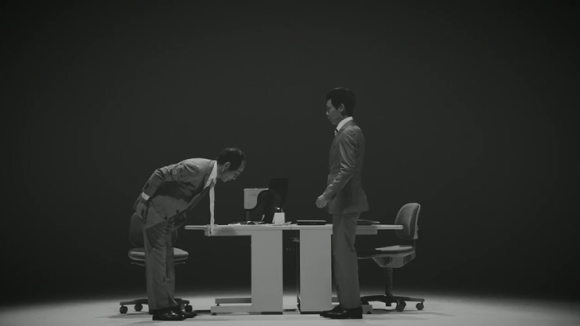
If you’re starting a new job, you might want to stretch out your back before showing up at the office for your first day.
Cultural guidebooks make a big deal about the psychological aspects of bowing in Japan. What many of them fail to mention, though, is the physical challenge that’s sometimes involved in properly performing the greeting.
For example, one of the finer points of bowing is that whoever bows deeper conveys more respect. So in general, if you’re trying to make a good impression on your workplace superiors or romantic partner’s parents, you’re going to want to make sure you bow nice and deep.
Bowing isn’t a sign of submission in Japan, though. It’s a reciprocal action, so as you’re bowing to, say, your new boss, he’s going to be bowing back to solemnly thank you in advance for all the hard work you’re sure to be putting in. Still, good manners dictate that as the subordinate on the corporate ladder, your forehead should be closer to the floor than his, and as this video shows, that can be a real problem if your boss is particularly short in stature or limber in his lower back.
“Greetings are complicated ceremonies that cause troubles for the Japanese people,” the narrator announces. We then see a salaryman who’s just been transferred to a new team at work, and has walked over to the section chief’s desk to formally announce that he’ll be working for him from now.
He’s about halfway through his self-introduction when his boss stops him and stands up. The interruption is sort of an odd thing to do in this situation, but the section chief follows it up by bowing and telling his new charge “Yoroshiku wo negai shimasu,” the extremely versatile and convenient Japanese phrase used when entering into a professional or personal venture with someone.
Ordinarily, the junior-ranking person should initiate the bow, so this gets the younger salaryman in a bit of a fluster. But hey, with his boss already bowing to him, at least now he can gauge how deeply he should bow back, right?
But knowing isn’t doing, and this impromptu forward-leaning limbo contest is tougher than the salaryman had expected.
With the onscreen text describing it as “a battle between men,” the two squat ever lower in an effort to show the greater respect.
As the increasingly acute angle between their calves and hamstrings shrinks below 30 degrees, the section chief finally loses his balance and topples to the floor, before picking himself up and telling the salaryman, “You’ve really got this down.”
▼ If you’ve never worked in a Japanese office, don’t worry. The entire ordeal is meant to be laughably over-the-top.
Oddly enough, the video comes from beverage maker Kirin, and is part of a promotion for its bottled green tea Namacha, which was just re-released with a new, more flavorful recipe. No, the video doesn’t give any clue as to how its content is supposed to tie in to tea, and actually, Kirin didn’t need to do anything to convince us to try it, since we already did (and loved it). Still, every now and then it’s nice to be reminded that even Japanese people can sometimes start to feel like they sometimes take etiquette a little too seriously.
Source: Japaaan
Images: YouTube/キリンビバレッジ

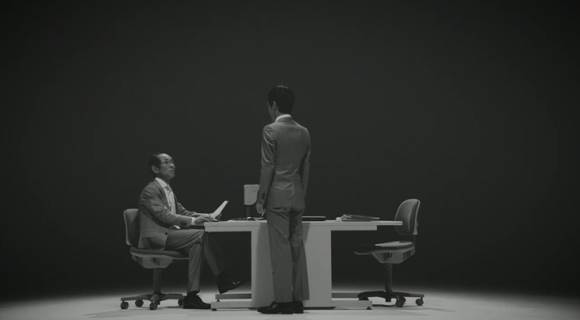
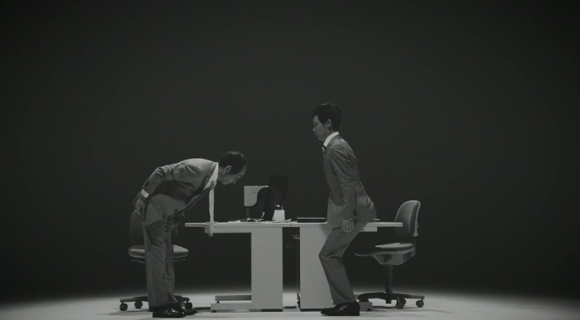
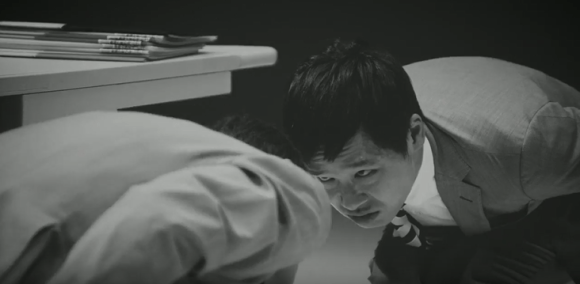
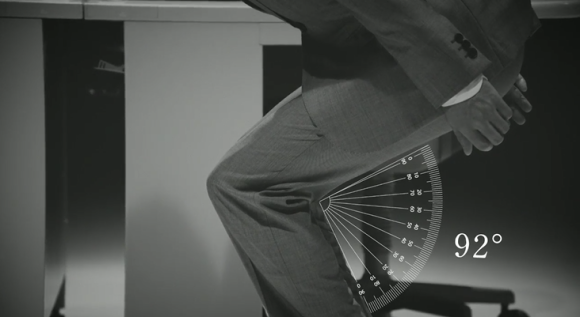
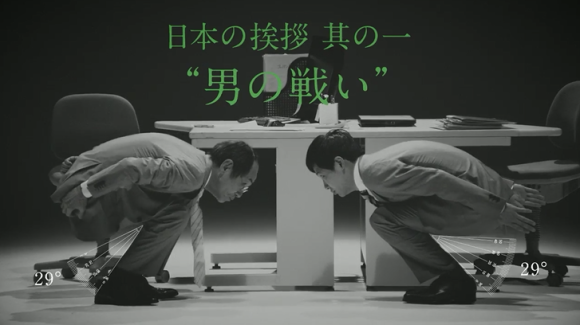
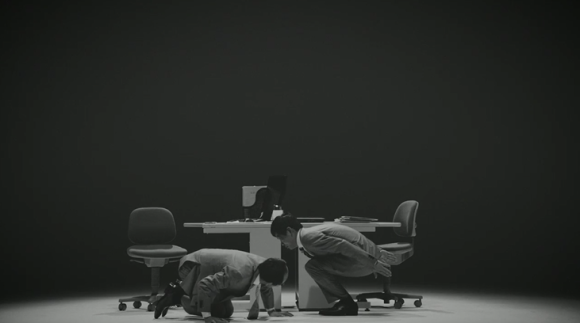
 Cats bowing in apology is Japan’s latest weird gacha capsule toy collection
Cats bowing in apology is Japan’s latest weird gacha capsule toy collection Japanese custom of bowing to cars at crosswalks keeps locals safe, warms Internet’s hearts【Video】
Japanese custom of bowing to cars at crosswalks keeps locals safe, warms Internet’s hearts【Video】 Blink and you’ll miss what riled racists in this Japanese McDonald’s ad 【Video】
Blink and you’ll miss what riled racists in this Japanese McDonald’s ad 【Video】 No screaming allowed on Japanese roller coasters, and new video shows it can be done【Video】
No screaming allowed on Japanese roller coasters, and new video shows it can be done【Video】 Rules of tea, business cards, and bowing – 10 Japanese business manners young people are tired of
Rules of tea, business cards, and bowing – 10 Japanese business manners young people are tired of Foreigner’s request for help in Tokyo makes us sad for the state of society
Foreigner’s request for help in Tokyo makes us sad for the state of society Harajuku Station’s beautiful old wooden building is set to return, with a new complex around it
Harajuku Station’s beautiful old wooden building is set to return, with a new complex around it Red light district sushi restaurant in Tokyo shows us just how wrong we were about it
Red light district sushi restaurant in Tokyo shows us just how wrong we were about it Ghibli Park now selling “Grilled Frogs” from food cart in Valley of Witches
Ghibli Park now selling “Grilled Frogs” from food cart in Valley of Witches Japanese city loses residents’ personal data, which was on paper being transported on a windy day
Japanese city loses residents’ personal data, which was on paper being transported on a windy day Historical figures get manga makeovers from artists of Spy x Family, My Hero Academia and more
Historical figures get manga makeovers from artists of Spy x Family, My Hero Academia and more Resol Poshtel: Cheap capsule hotel in Tokyo is a hit with overseas visitors, and we find out why
Resol Poshtel: Cheap capsule hotel in Tokyo is a hit with overseas visitors, and we find out why French Fries Bread in Tokyo’s Shibuya becomes a hit on social media
French Fries Bread in Tokyo’s Shibuya becomes a hit on social media Anime girl English teacher Ellen-sensei becomes VTuber/VVTUber and NFT
Anime girl English teacher Ellen-sensei becomes VTuber/VVTUber and NFT Japan’s massive matcha parfait weighs 6 kilos, contains hidden surprises for anyone who eats it
Japan’s massive matcha parfait weighs 6 kilos, contains hidden surprises for anyone who eats it McDonald’s new Happy Meals offer up cute and practical Sanrio lifestyle goods
McDonald’s new Happy Meals offer up cute and practical Sanrio lifestyle goods Japanese ramen restaurants under pressure from new yen banknotes
Japanese ramen restaurants under pressure from new yen banknotes All-you-can-drink Starbucks and amazing views part of Tokyo’s new 170 meter-high sky lounge
All-you-can-drink Starbucks and amazing views part of Tokyo’s new 170 meter-high sky lounge Studio Ghibli releases new action figures featuring Nausicaä of the Valley of the Wind characters
Studio Ghibli releases new action figures featuring Nausicaä of the Valley of the Wind characters New private rooms on Tokaido Shinkansen change the way we travel from Tokyo to Kyoto
New private rooms on Tokaido Shinkansen change the way we travel from Tokyo to Kyoto Studio Ghibli glasses cases let anime characters keep an eye on your spectacles
Studio Ghibli glasses cases let anime characters keep an eye on your spectacles Tokyo Tsukiji fish market site to be redeveloped with 50,000-seat stadium, hotel, shopping center
Tokyo Tsukiji fish market site to be redeveloped with 50,000-seat stadium, hotel, shopping center Beautiful Ghibli sealing wax kits let you create accessories and elegant letter decorations【Pics】
Beautiful Ghibli sealing wax kits let you create accessories and elegant letter decorations【Pics】 Studio Ghibli releases Kiki’s Delivery Service chocolate cake pouches in Japan
Studio Ghibli releases Kiki’s Delivery Service chocolate cake pouches in Japan New definition of “Japanese whiskey” goes into effect to prevent fakes from fooling overseas buyers
New definition of “Japanese whiskey” goes into effect to prevent fakes from fooling overseas buyers Our Japanese reporter visits Costco in the U.S., finds super American and very Japanese things
Our Japanese reporter visits Costco in the U.S., finds super American and very Japanese things Studio Ghibli unveils Mother’s Day gift set that captures the love in My Neighbour Totoro
Studio Ghibli unveils Mother’s Day gift set that captures the love in My Neighbour Totoro New Japanese KitKat flavour stars Sanrio characters, including Hello Kitty
New Japanese KitKat flavour stars Sanrio characters, including Hello Kitty More foreign tourists than ever before in history visited Japan last month
More foreign tourists than ever before in history visited Japan last month New Pokémon cakes let you eat your way through Pikachu and all the Eevee evolutions
New Pokémon cakes let you eat your way through Pikachu and all the Eevee evolutions Sales of Japan’s most convenient train ticket/shopping payment cards suspended indefinitely
Sales of Japan’s most convenient train ticket/shopping payment cards suspended indefinitely Sold-out Studio Ghibli desktop humidifiers are back so Totoro can help you through the dry season
Sold-out Studio Ghibli desktop humidifiers are back so Totoro can help you through the dry season Japanese government to make first change to romanization spelling rules since the 1950s
Japanese government to make first change to romanization spelling rules since the 1950s Ghibli founders Toshio Suzuki and Hayao Miyazaki contribute to Japanese whisky Totoro label design
Ghibli founders Toshio Suzuki and Hayao Miyazaki contribute to Japanese whisky Totoro label design Doraemon found buried at sea as scene from 1993 anime becomes real life【Photos】
Doraemon found buried at sea as scene from 1993 anime becomes real life【Photos】 Tokyo’s most famous Starbucks is closed
Tokyo’s most famous Starbucks is closed One Piece characters’ nationalities revealed, but fans have mixed opinions
One Piece characters’ nationalities revealed, but fans have mixed opinions We asked a Uniqlo employee what four things we should buy and their suggestions didn’t disappoint
We asked a Uniqlo employee what four things we should buy and their suggestions didn’t disappoint Princesses, fruits, and blacksmiths: Study reveals the 30 most unusual family names in Japan
Princesses, fruits, and blacksmiths: Study reveals the 30 most unusual family names in Japan Make the ocean your office with new TRUE WETSUITS from Quicksilver 【Video】
Make the ocean your office with new TRUE WETSUITS from Quicksilver 【Video】 Adorable judo girls still years away from making us scared, already able to make us smile
Adorable judo girls still years away from making us scared, already able to make us smile Japan is so polite even its hanko stamps bow to show respect
Japan is so polite even its hanko stamps bow to show respect Japan set to receive amazing ribbon bow Coca-Cola bottles for Christmas this year【Video】
Japan set to receive amazing ribbon bow Coca-Cola bottles for Christmas this year【Video】 The Japanese train station where staff bow to departing passengers
The Japanese train station where staff bow to departing passengers Who needs a real weapon? Salaryman makes awesome FX battle video using a traffic cone【Video】
Who needs a real weapon? Salaryman makes awesome FX battle video using a traffic cone【Video】 Mother smacks child for riding bike in front of oncoming car, debate ensues【Video】
Mother smacks child for riding bike in front of oncoming car, debate ensues【Video】 Tokyo Disney’s first fashion dolls make their debut!
Tokyo Disney’s first fashion dolls make their debut! Aquarium workers in Kochi resort to tweeting “Please come so we can get our salaries!”
Aquarium workers in Kochi resort to tweeting “Please come so we can get our salaries!” Magical shoes for magical girls as Madoka Magica anime inspires new sneaker line 【Photos】
Magical shoes for magical girls as Madoka Magica anime inspires new sneaker line 【Photos】 Gomen neko: adorable carry pouches feature “sorry cats” bowing in apology
Gomen neko: adorable carry pouches feature “sorry cats” bowing in apology Two incredibly important phrases to remember when shopping in Japan
Two incredibly important phrases to remember when shopping in Japan Hilarious Japanese commercial shows what happens when you beat the company president
Hilarious Japanese commercial shows what happens when you beat the company president Japanese jeweler launches new engagement and wedding rings with Sanrio character Tuxedo Sam
Japanese jeweler launches new engagement and wedding rings with Sanrio character Tuxedo Sam Cute cat finds way to make humans bow down and worship him at Japanese shrine
Cute cat finds way to make humans bow down and worship him at Japanese shrine
Leave a Reply